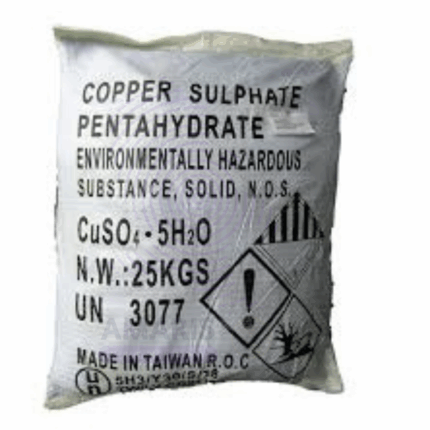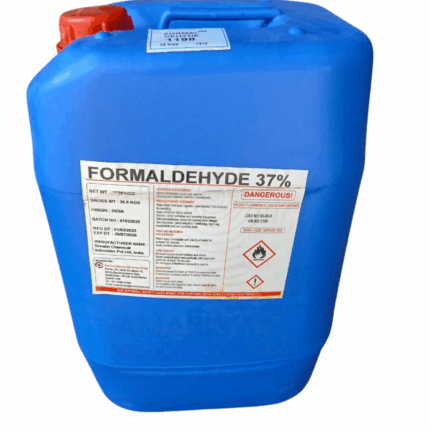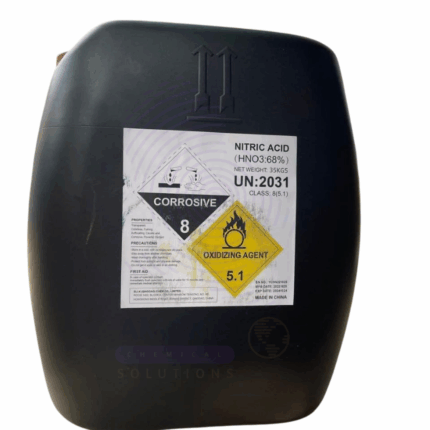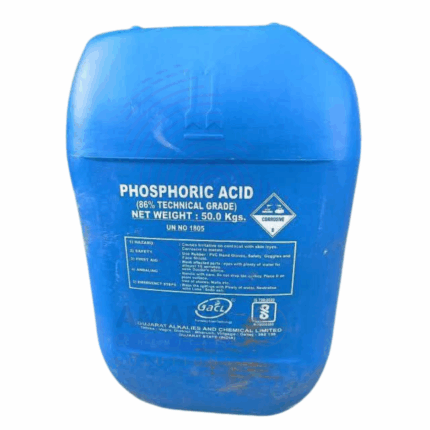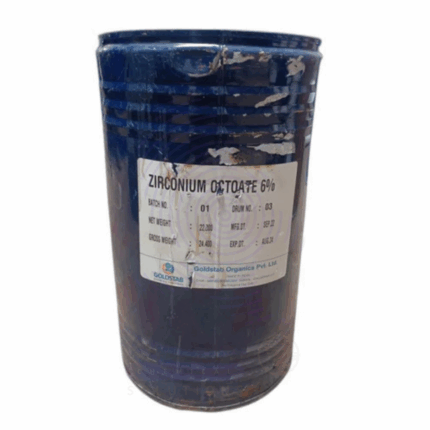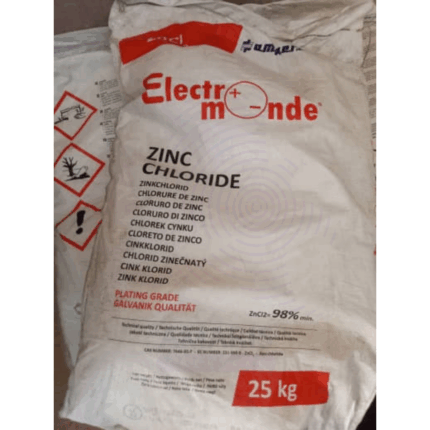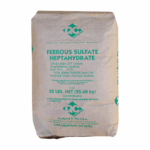
Ferrous Sulphate Heptahydrate
$ 1.11 Original price was: $ 1.11.$ 1.01Current price is: $ 1.01.
Ferrous Sulphide
Whatsapp Order
Ferrous Sulphide (FeS) is an inorganic iron-sulfur compound appearing as a dark gray to black crystalline powder or solid. It has low solubility in water but reacts with acids to release hydrogen sulfide gas. It is used in numerous industrial and chemical processes due to its sulfide content and reactive properties. Ferrous Sulphide serves as a key intermediate in metallurgy, chemical synthesis, wastewater treatment, pigment production, and more.
Category: pH Modifiers
Tags: Corrosion Inhibitor, Ferrous Sulphide, FeS, Industrial chemical, Iron Sulfide
Description
Table of Contents
Toggle
Ferrous Sulphide
Primary Uses
- Chemical Industry
- Ferrous Sulphide is widely used as a raw material or intermediate for producing various sulfur-containing compounds such as iron sulfides, sulfur fertilizers, and iron salts. It acts as a source of sulfide ions in chemical syntheses and reactions where controlled sulfide release is necessary. The compound is also used in the manufacture of sulfur dyes and pigments.
- Metallurgical Applications
- In steel and iron production, Ferrous Sulphide is utilized for desulfurization—removing excess sulfur from molten metals to improve mechanical properties and prevent brittleness. It can also be involved in producing iron sulfide layers that protect metals against corrosion under certain conditions.
- Water and Wastewater Treatment
- Ferrous Sulphide finds use in environmental engineering to precipitate heavy metals such as mercury, cadmium, lead, and arsenic from contaminated water streams by forming insoluble metal sulfides. This property makes it valuable for treating industrial effluents and preventing environmental contamination.
- Pigment and Coatings
- Ferrous Sulphide is used in the manufacture of black pigments utilized in inks, paints, varnishes, and coatings. Its stable color properties provide durable, intense black coloration in various decorative and protective finishes.
Secondary Uses
- Pharmaceutical Industry
- Although limited, Ferrous Sulphide is sometimes employed in traditional medicine formulations, often for its iron content. It may be found in preparations for anemia treatment where slow-release iron and sulfur supplementation is beneficial.
- Laboratory and Research
- In research laboratories, Ferrous Sulphide serves as a sulfide ion source in analytical chemistry and experimental studies involving sulfide-metal interactions, environmental simulations, and material synthesis.
- Battery Technology and Catalysis
- Emerging applications include use as a cathode material or catalyst in energy storage devices such as lithium-ion batteries and in catalyzing sulfur-related chemical reactions. These advanced uses are under active investigation.
- Agriculture
- While less common, Ferrous Sulphide has been explored as a micronutrient fertilizer additive to supply both iron and sulfur, essential elements for plant growth, enhancing crop yields and soil health.
KEY PRODUCT FEATURES
1. Basic Identification Attributes
- Chemical Name (IUPAC): Iron(II) sulfide
- Common/Trade Name: Ferrous Sulphide
- CAS Number: 1317-37-9
- HS Code: 2825.90.00
- Molecular Formula: FeS
- Synonyms: Iron monosulfide, Ferrous monosulfide
2. Physical & Chemical Properties
- Physical State: Powder or crystalline solid
- Color & Odor: Dark gray to black; odorless unless decomposed
- Melting Point: Approximately 1194°C
- Boiling Point: Not applicable (decomposes)
- Density: About 4.84 g/cm³
- Solubility: Insoluble in water; soluble in dilute acids releasing H₂S gas
- pH: Neutral in solid form; acidic when reacting with acids
- Stability: Stable under dry conditions; reacts with acids and moisture releasing hydrogen sulfide gas
3. Safety & Hazard Attributes
- Hazard Class (GHS): Irritant; harmful if inhaled due to potential H₂S gas release
- Toxicity: Can release toxic hydrogen sulfide gas upon acid contact
- Exposure Limits: No specific occupational limits; control exposure to hydrogen sulfide
- NFPA Ratings: Health 2, Flammability 0, Reactivity 1
4. Storage & Handling Attributes
- Storage Conditions: Store in a cool, dry, well-ventilated area, away from acids and moisture
- Container Type: Sealed containers or drums to prevent moisture ingress
- Shelf Life: Typically 1–2 years if stored properly
- Handling Precautions: Avoid dust inhalation; use gloves, goggles, and respiratory protection
5. Regulatory & Compliance Attributes
- Complies with REACH, OSHA, and other relevant chemical safety standards
- Classified as hazardous due to hydrogen sulfide release risk; requires proper labeling
6. Environmental & Health Impact
- Ecotoxicity: Toxic to aquatic organisms if released untreated
- Persistence: Decomposes naturally; not persistent
- Bioaccumulation: Not expected to bioaccumulate
- Carcinogenicity/Mutagenicity: Not classified as carcinogenic or mutagenic
SAFETY HANDLING PRECAUTIONS
Safety Handling Precautions
- Personal Protective Equipment (PPE):
Gloves, safety goggles, dust mask or respirator, protective clothing - Handling Guidelines:
Avoid dust generation; work in well-ventilated areas; keep away from acids to prevent toxic gas release - Storage Measures:
Keep containers tightly sealed; store in dry conditions away from incompatible substances - Hygiene Practices:
Wash hands after handling; avoid eating, drinking, or smoking in work areas
First Aid Measures
- Inhalation: Move to fresh air immediately; seek medical attention if respiratory irritation occurs
- Skin Contact: Wash with soap and water; seek medical attention if irritation persists
- Eye Contact: Rinse with water for 15 minutes; consult a physician if irritation continues
- Ingestion: Rinse mouth; do not induce vomiting; seek immediate medical attention
Firefighting Measures
- Fire Hazards: Not flammable, but can release toxic hydrogen sulfide gas when heated or decomposed
- Extinguishing Media: Water spray, dry chemical, foam—depending on surrounding fire
- Special Precautions: Firefighters should wear self-contained breathing apparatus due to toxic gas risk
- Decomposition Products: Hydrogen sulfide, sulfur oxides, and iron oxides upon heating
Related products
Copper Sulphate Pentahydrate
Copper Sulphate Pentahydrate (CuSO₄·5H₂O) is a bright blue crystalline solid widely used as a chemical reagent, agricultural fungicide, and analytical reagent. It consists of copper, sulfur, oxygen, and water molecules, forming a distinctive pentahydrate structure. This inorganic salt is highly soluble in water, exhibiting antifungal, algaecidal, and bactericidal properties. Copper Sulphate Pentahydrate is extensively employed in agriculture, industry, and laboratory applications due to its effectiveness, affordability, and well-understood chemistry.
Cupric Sulphate Anhydrous
Cupric Sulphate Anhydrous (Copper(II) sulfate, anhydrous form) is a blue to green crystalline powder that is highly soluble in water. It is an inorganic compound consisting of copper, sulfur, and oxygen with the formula CuSO₄. Unlike its hydrated counterpart (CuSO₄·5H₂O), the anhydrous form contains no water molecules. It is widely used in agriculture, industry, and chemical manufacturing due to its fungicidal, algicidal, and chemical reactivity properties. The compound serves as a precursor to many copper salts and catalysts.
Cupric Sulphate Pentahydrate
Cupric Sulphate Pentahydrate (Copper(II) sulfate pentahydrate) is a bright blue crystalline solid with the chemical formula CuSO₄·5H₂O. It is the hydrated form of copper sulfate and is highly soluble in water. This compound is widely used in agriculture, chemical manufacturing, and laboratory applications due to its fungicidal, algicidal, and micronutrient properties. The pentahydrate form is the most common and commercially available, known for its vivid blue color and versatile reactivity.
Formaldehyde (Formalin)
Formaldehyde (Formalin) is an aqueous solution containing approximately 37% formaldehyde by weight, stabilized typically with 10-15% methanol to prevent polymerization. It is a clear, colorless liquid with a pungent, penetrating odor. Formaldehyde is a simple aldehyde widely used as a disinfectant, preservative, and chemical intermediate. Formalin’s powerful antimicrobial and tissue-fixation properties make it essential in medical, laboratory, industrial, and manufacturing applications. It is one of the most commonly used chemicals worldwide for sterilization, embalming, and resin production.
Nitric Acid
Nitric Acid is a concentrated aqueous solution of nitric acid (HNO₃) commonly used as a strong oxidizing acid in numerous industrial, laboratory, and manufacturing processes. It is a highly corrosive, colorless to yellowish liquid with a pungent odor. Nitric Acid 68% is fundamental in the production of fertilizers, explosives, dyes, and pharmaceuticals. It is also widely used in metal treatment, etching, and cleaning applications due to its powerful oxidizing and nitrating properties.
Phosphoric acid Technical Grade
Phosphoric Acid Technical Grade is a concentrated, inorganic acid primarily used in industrial applications. It typically contains minor impurities compared to food or pharmaceutical grades but maintains excellent performance as an acidulant, rust remover, and intermediate chemical. This grade is widely used in manufacturing fertilizers, detergents, metal treatment, and other industrial processes where high purity is not critical but effective acidic properties are required.
Zicronium Octoate
Zicronium Octoate is a metal carboxylate solution comprising zirconium ions complexed with octoic acid at an 18% zirconium concentration. It serves as an effective crosslinking and curing agent in coatings, adhesives, and sealants, enhancing film hardness, chemical resistance, and durability. This zirconium-based additive is valued for its catalytic properties in accelerating the curing of various polymer systems, especially in automotive and industrial applications.
Zinc chloride
Zinc Chloride is a highly versatile, white crystalline inorganic compound known for its strong hygroscopic nature and high solubility in water. It serves multiple industrial roles including fluxing, dehydrating, catalysis, and preservation. With applications across metallurgy, pharmaceuticals, textiles, water treatment, and chemical synthesis, Zinc Chloride is valued for its reactivity and binding properties.


 Preservatives(food)
Preservatives(food) Flavor Enhancers
Flavor Enhancers Acidulants
Acidulants Sweeteners
Sweeteners Antioxidants
Antioxidants Colorants(food)
Colorants(food) Nutraceutical Ingredients (food)
Nutraceutical Ingredients (food) Nutrient Supplements
Nutrient Supplements Emulsifiers
Emulsifiers
 Collectors
Collectors Dust Suppressants
Dust Suppressants Explosives and Blasting Agents
Explosives and Blasting Agents Flocculants and Coagulants
Flocculants and Coagulants Frothers
Frothers Leaching Agents
Leaching Agents pH Modifiers
pH Modifiers Precious Metal Extraction Agents
Precious Metal Extraction Agents
 Antioxidants(plastic)
Antioxidants(plastic) Colorants (Pigments, Dyes)
Colorants (Pigments, Dyes) Fillers and Reinforcements
Fillers and Reinforcements Flame Retardants
Flame Retardants Monomers
Monomers Plasticizers
Plasticizers Polymerization Initiators
Polymerization Initiators Stabilizers (UV, Heat)
Stabilizers (UV, Heat)
 Antifoaming Agents
Antifoaming Agents Chelating Agents
Chelating Agents Coagulants and Flocculants
Coagulants and Flocculants Corrosion Inhibitors
Corrosion Inhibitors Disinfectants and Biocides
Disinfectants and Biocides Oxidizing Agents
Oxidizing Agents pH Adjusters
pH Adjusters Scale Inhibitors( water)
Scale Inhibitors( water)
 Antioxidants(cosmetic)
Antioxidants(cosmetic) Emollients
Emollients Fragrances and Essential Oils
Fragrances and Essential Oils Humectants
Humectants Preservatives
Preservatives Surfactants(cosmetic)
Surfactants(cosmetic) Thickeners
Thickeners UV Filters
UV Filters
 Fertilizers
Fertilizers Soil Conditioners
Soil Conditioners Plant Growth Regulators
Plant Growth Regulators Animal Feed Additives
Animal Feed Additives Biostimulants
Biostimulants Pesticides (Herbicides, Insecticides, Fungicides)
Pesticides (Herbicides, Insecticides, Fungicides)
 Active Pharmaceutical Ingredients (APIs)
Active Pharmaceutical Ingredients (APIs) Excipients
Excipients Solvents(pharmaceutical)
Solvents(pharmaceutical) Antibiotics
Antibiotics Antiseptics and Disinfectants
Antiseptics and Disinfectants Vaccine Adjuvants
Vaccine Adjuvants Nutraceutical Ingredients (pharmaceutical)
Nutraceutical Ingredients (pharmaceutical) Analgesics & Antipyretics
Analgesics & Antipyretics
 Analytical Reagents
Analytical Reagents Solvents(lab)
Solvents(lab) Chromatography Chemicals
Chromatography Chemicals Spectroscopy Reagents
Spectroscopy Reagents microbiology-and-cell-culture-reagents
microbiology-and-cell-culture-reagents Molecular Biology Reagents
Molecular Biology Reagents Biochemical Reagents
Biochemical Reagents Inorganic and Organic Standards
Inorganic and Organic Standards Laboratory Safety Chemicals
Laboratory Safety Chemicals Specialty Laboratory Chemicals(Special Laboratory Equipment)
Specialty Laboratory Chemicals(Special Laboratory Equipment)
 Demulsifiers
Demulsifiers Hydraulic Fracturing Fluids
Hydraulic Fracturing Fluids Scale Inhibitors(oil)
Scale Inhibitors(oil) Surfactants(oil)
Surfactants(oil) Drilling Fluids
Drilling Fluids
 Dyes and Pigments
Dyes and Pigments Bleaching Agents
Bleaching Agents Softening Agents
Softening Agents Finishing Agents
Finishing Agents Antistatic Agents
Antistatic Agents
 Admixtures
Admixtures Waterproofing Agents
Waterproofing Agents Sealants and Adhesives
Sealants and Adhesives Curing Compounds
Curing Compounds Concrete Repair Chemicals
Concrete Repair Chemicals Anti-Corrosion Coatings
Anti-Corrosion Coatings
 Surfactants(cleaning)
Surfactants(cleaning) Builders
Builders Enzymes
Enzymes Solvents (Cleaning)
Solvents (Cleaning) Fragrances
Fragrances
 Electronic Chemicals
Electronic Chemicals Catalysts
Catalysts Lubricants
Lubricants Photographic Chemicals
Photographic Chemicals Refrigerants
Refrigerants Automotive chemicals
Automotive chemicals Pyrotechnic Chemicals
Pyrotechnic Chemicals
 Biodegradable Surfactants
Biodegradable Surfactants Bio-based Solvents
Bio-based Solvents Renewable Polymers
Renewable Polymers Carbon Capture Chemicals
Carbon Capture Chemicals Wastewater Treatment Chemicals
Wastewater Treatment Chemicals
 Pigments
Pigments Solvents(paint)
Solvents(paint) Specialty Coatings
Specialty Coatings Binders/Resins
Binders/Resins Additives
Additives Driers
Driers Anti-Corrosion Agents
Anti-Corrosion Agents Functional Coatings
Functional Coatings Application-Specific Coatings
Application-Specific Coatings
 Fresh Herbs
Fresh Herbs Ground Spices
Ground Spices Whole Spices
Whole Spices Spice Blends
Spice Blends Dried Herbs
Dried Herbs
 Leavening Agents
Leavening Agents Dough Conditioners
Dough Conditioners Flour Treatments
Flour Treatments Fat Replacers
Fat Replacers Decoratives
Decoratives Preservatives(baking)
Preservatives(baking)
 Plasticizers & Softeners
Plasticizers & Softeners Reinforcing Agents
Reinforcing Agents Adhesion Promoters
Adhesion Promoters Vulcanizing Agents
Vulcanizing Agents Antidegradants
Antidegradants Blowing Agents
Blowing Agents Fillers & Extenders
Fillers & Extenders Accelerators & Retarders
Accelerators & Retarders


